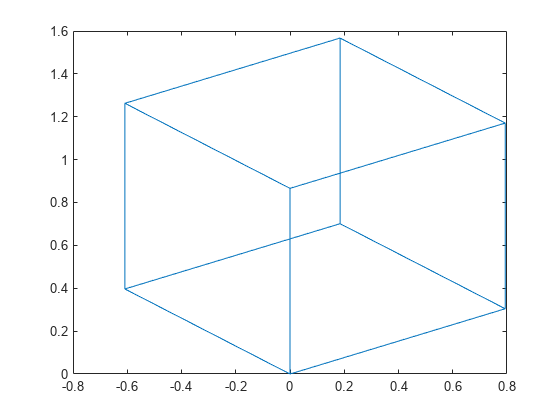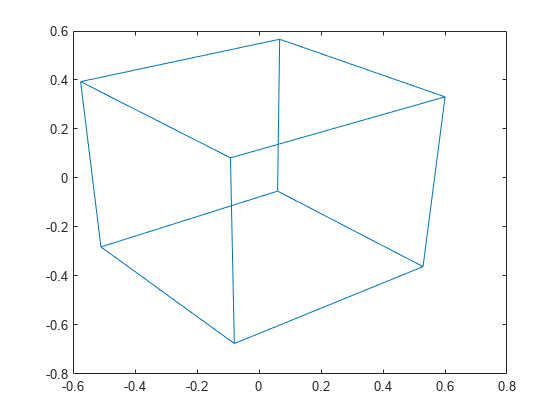viewmtx
查看变换矩阵
语法
viewmtx
T = viewmtx(az,el)
T = viewmtx(az,el,phi)
T = viewmtx(az,el,phi,xc)
说明
viewmtx 计算 4×4 正交或透视变换矩阵,该矩阵将四维齐次向量投射到二维视图表面(例如计算机屏幕)。
T = viewmtx(az,el) 返回对应于方位角 az 和仰角 el 的正交变换矩阵。az 是视点的方位角(即水平旋转,以度为单位)。el 是视点的仰角(以度为单位)。
T = viewmtx(az,el,phi) 返回透视变换矩阵。phi 是透视视角(以度为单位)。phi 是归一化绘图立方体(以度为单位)的对向视角,控制透视扭曲量。
Phi | 描述 |
|---|---|
0 度 | 正交投影 |
10 度 | 类似于远摄镜头 |
25 度 | 类似于普通镜头 |
60 度 | 类似于广角镜头 |
T = viewmtx(az,el,phi,xc) 返回透视变换矩阵,并使用 xc 作为归一化绘图立方体中的目标点(即相机正在观察点 xc)。xc 是视图中心的目标点。将该点指定为三元素向量 xc = [xc,yc,zc] 并位于区间 [0,1] 中。默认值为 xc = [0,0,0]。
四维齐次向量通过对相应的三维向量追加 1 构成。例如,[x,y,z,1] 是对应于三维点 [x,y,z] 的四维向量。
示例
版本历史记录
在 R2006a 之前推出

